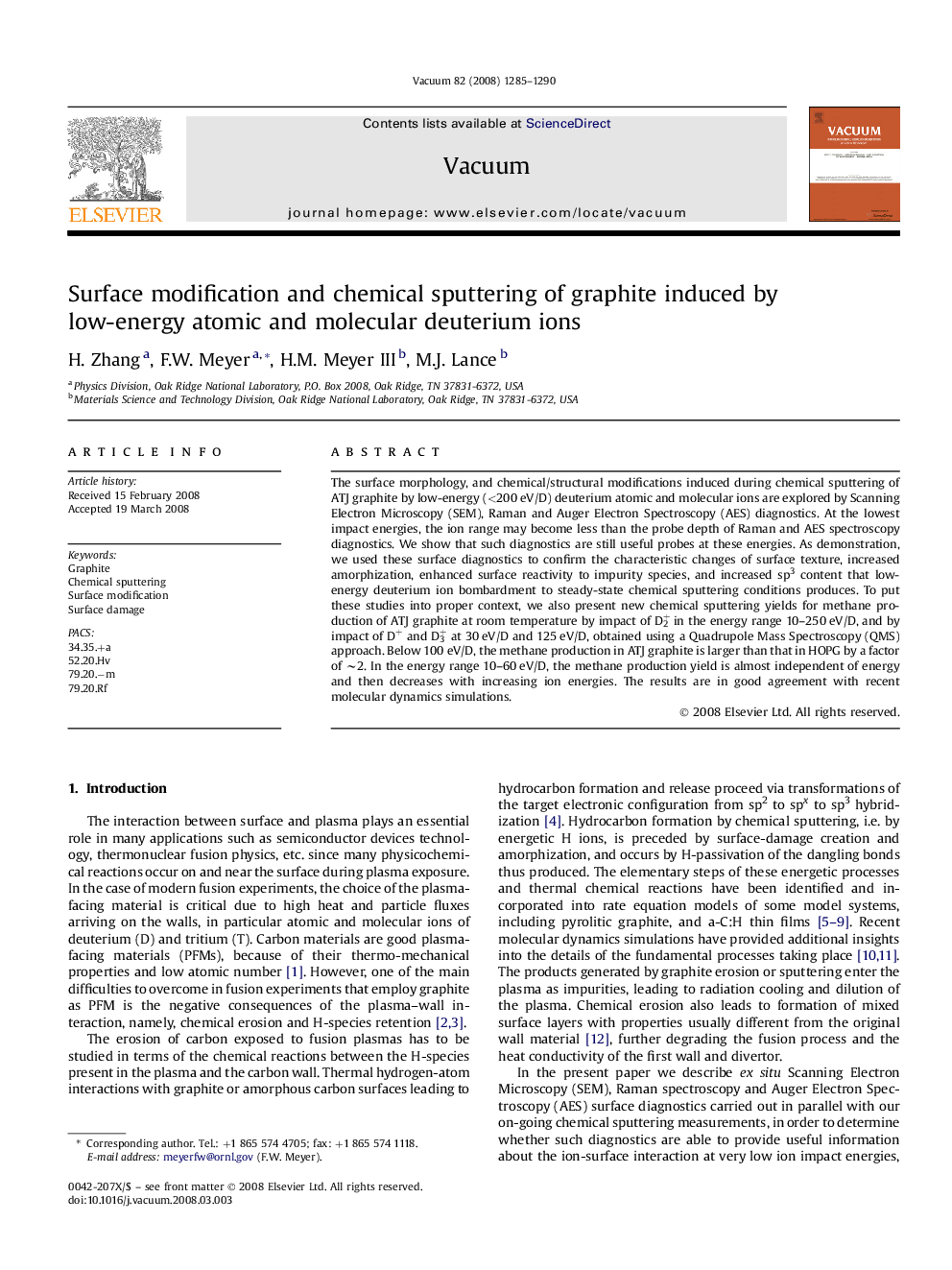| Article ID | Journal | Published Year | Pages | File Type |
|---|---|---|---|---|
| 1691207 | Vacuum | 2008 | 6 Pages |
The surface morphology, and chemical/structural modifications induced during chemical sputtering of ATJ graphite by low-energy (<200 eV/D) deuterium atomic and molecular ions are explored by Scanning Electron Microscopy (SEM), Raman and Auger Electron Spectroscopy (AES) diagnostics. At the lowest impact energies, the ion range may become less than the probe depth of Raman and AES spectroscopy diagnostics. We show that such diagnostics are still useful probes at these energies. As demonstration, we used these surface diagnostics to confirm the characteristic changes of surface texture, increased amorphization, enhanced surface reactivity to impurity species, and increased sp3 content that low-energy deuterium ion bombardment to steady-state chemical sputtering conditions produces. To put these studies into proper context, we also present new chemical sputtering yields for methane production of ATJ graphite at room temperature by impact of D2+ in the energy range 10–250 eV/D, and by impact of D+ and D3+ at 30 eV/D and 125 eV/D, obtained using a Quadrupole Mass Spectroscopy (QMS) approach. Below 100 eV/D, the methane production in ATJ graphite is larger than that in HOPG by a factor of ∼2. In the energy range 10–60 eV/D, the methane production yield is almost independent of energy and then decreases with increasing ion energies. The results are in good agreement with recent molecular dynamics simulations.
